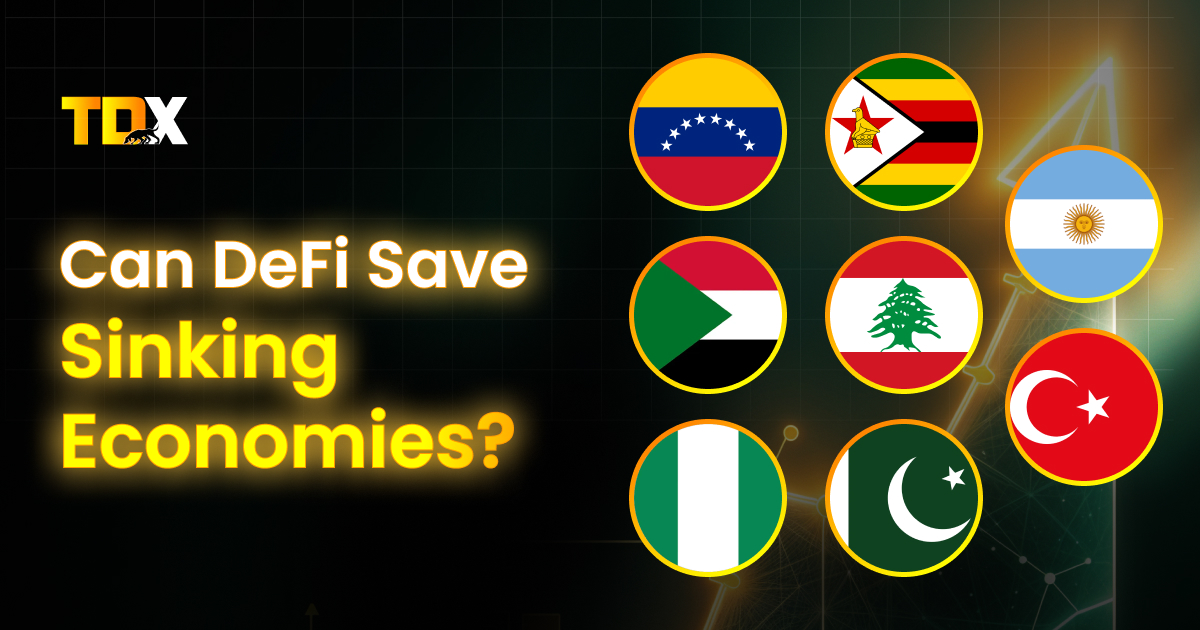 Back to blog
Back to blog


Challenges & Opportunities in the DePIN Ecosystem
The Decentralized Physical Infrastructure Network (DePIN) ecosystem represents a transformative approach to infrastructure development, leveraging blockchain technology to create decentralized and transparent networks. This ecosystem, while promising, faces numerous challenges and opportunities that will shape its future trajectory. Read on to find out more!
Understanding DePIN
DePIN refers to infrastructure projects that use blockchain technology and crypto economics to motivate individuals to allocate their resources towards building a transparent, decentralized, and verifiable network. These projects encompass various sectors, such as compute networks, wireless networks, storage, and sensors.
Opportunities in the DePIN Ecosystem
- Enhanced Transparency and Security
DePIN projects embed transparency and security into the very fabric of physical systems. By decentralizing control, these networks reduce the risk of single points of failure and enhance data integrity. This approach can mitigate issues related to data breaches and ensure more secure infrastructure management. - Community Involvement and Empowerment
DePIN empowers communities by allowing individuals to contribute their resources and be rewarded for it. This decentralized model fosters community involvement and ensures that infrastructure development is more democratic and inclusive. - Cost Efficiency
Decentralized networks can significantly reduce costs compared to traditional infrastructure. For instance, decentralized storage solutions are often cheaper than centralized ones, as they utilize surplus computing resources globally. This cost efficiency can make DePIN projects more attractive to both contributors and consumers. - Scalability and Flexibility
DePIN projects can scale more efficiently than their centralized counterparts. The decentralized nature of these networks allows for organic growth and adaptability to changing demands. This flexibility is particularly valuable in rapidly evolving technological landscapes.
Challenges in the DePIN Ecosystem
- Token Price Volatility
One of the major challenges for DePIN projects is the inherent price volatility of tokens. Supply-side contributors receive compensation in the form of native tokens, and fluctuations in token prices can impact their profitability and willingness to participate. Addressing this issue requires well-designed tokenomics and hedging strategies to mitigate risks. - Technical Complexity and Adoption
Interacting with DePIN projects can be technically complex for the general public. This complexity can hinder adoption, as users may find it challenging to navigate decentralized platforms compared to traditional Web2 services. Improving user experience and interfaces is crucial to making DePIN more accessible. - Profit-Driven Participation
The performance of native tokens plays a crucial role in attracting and retaining users. During market downturns, falling token prices can lead to a decline in participation. Projects need to demonstrate clear value and product-market fit to appeal to users beyond profit-driven motives. - Public Awareness
Limited public awareness of DePIN projects poses a significant barrier to adoption. While these projects offer transparent and cost-effective solutions, they are not well-known outside the crypto industry. Increasing awareness through education and outreach is essential to drive broader adoption.
Case Studies
Akash Network
Akash Network is a decentralized compute network that enables users to deploy cloud infrastructure or sell idle cloud resources. By establishing a marketplace for computing resources, Akash provides a cost-effective alternative to centralized cloud providers. This allows for more competitive pricing and greater utilization of unused resources.
Source: Akash Network
Notably, the cost of utilizing Akash’s services is very competitive, often significantly lower than that of centralized cloud providers. A major factor in this affordability is Akash’s “reverse auction” system, where customers propose their desired price and providers compete to win their business.
Helium
Helium is a decentralized wireless infrastructure project providing coverage for IoT and 5G devices. Using cryptographic incentives, Helium allows individuals to deploy hotspots and earn tokens, creating a global decentralized network. This model not only reduces costs associated with network deployment but also increases network reach and reliability.
Source: Helium Network
After introducing Helium Mobile’s nationwide phone plan offering unlimited data, text, and talk for $20 per month, coupled with a significant increase in Solana Saga smartphone sales—which include a complimentary 30-day subscription to Helium Mobile—the Helium Network has experienced a substantial rise in the number of new hotspots added in recent months.
Future Outlook
The future of DePIN projects is promising, with the potential to coexist alongside traditional infrastructure players. By integrating DePIN with Web2 front-ends, users can interact with familiar interfaces while benefiting from the advantages of decentralized back-ends. Additionally, increasing token utility and composability within the broader on-chain ecosystem can enhance the appeal of DePIN projects.
In conclusion, while DePIN faces challenges such as token price volatility, technical complexity, and limited public awareness, the opportunities for enhanced transparency, community involvement, cost efficiency, and scalability make it a compelling model for the future of infrastructure development. As the sector continues to evolve, addressing these challenges will be crucial for achieving broader adoption and realizing the full potential of decentralized infrastructure.
40,000 readers 🚀 are getting insights with our media
 Read on Medium
Read on Medium 

Article
“Is Ethereum dead?” This is a trending argument that is appearing in various crypto communities and media. Which is not…


Guide
Welcome to the beginner’s guide on Trust Wallet, MetaMask, and Exodus—three most common cryptocurrency wallets for managing your crypto assets….


Article
When Venezuela’s inflation hit 189.8% in 2023 [Central Bank of Venezuela, 2023], Maria’s life savings of 200 million bolivars (enough…


Article
For generations, Indians have trusted one investment: fixed deposits (FDs). If you walk into any Indian household, chances are someone…


